Whether your furry friend is a senior dog or a new puppy, taking your dog to the vet is a critical part of their health and wellness routine at every age and stage of life. For some dogs, vet visits are stressful. Dr. Julie Buzby shares 15 tips for taking your dog to the vet. From booking the appointment to keeping your dog calm, she’s got you covered.
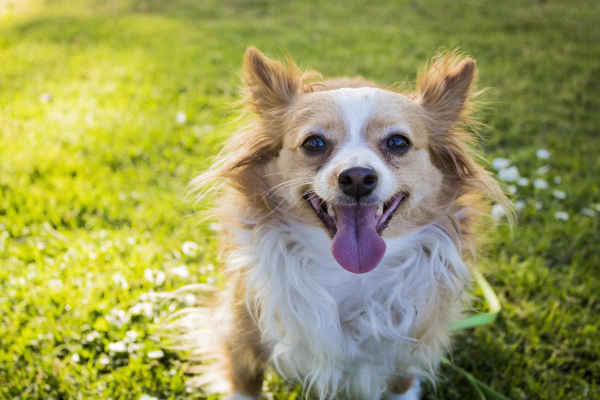
Vet visits can be stressful for both dogs and their owners. I can think of many examples of stress-inducing appointments, but Samson’s story stands out. In order for Samson’s dedicated dad to bring his eight-year-old Great Pyrenees in for his annual exam and vaccines, he had to pick up him up to put him in the car. During the car ride, Samson would tremble and drool due to nerves. Once in the exam room, all 150 pounds of this normally calm companion would scramble to hide underneath the table in my exam room.
Fortunately, over my 25+ years as an integrative veterinarian, I had a game plan for setting up stress-free, successful veterinary visits for dogs (and their pet owners). I shared my plan for less stressful and more successful vet visits with Samson’s dad, and together we turned things around for dear Samson. I’d like to share my plan with you, too.
15 tips for taking your dog to the vet
By the end of this list, you’ll be equipped with everything you need to know about taking your dog to the vet, including what to do before the visit, during the physical exam, and after the vet visit.
Before you take your dog to the vet
First, let’s talk about how to make a vet appointment for routine visits, yearly check-ups, and other problems. (By the way, if it is a life-threatening condition or injury and an emergency vet visit for your dog is necessary, seek emergency veterinary care immediately.)
1. Contact your vet’s office to make a vet appointment.
When you call to schedule an appointment, the veterinary staff might ask you some questions about your dog. I recommend having the following information at your fingertips:
- Know your dog’s name, breed, age, and spay or neuter status.
- Explain the reason your dog needs an appointment.
- Jot down your dog’s prior diseases or conditions.
- Have a record of your dog’s vaccines and medications.
- Be prepared to share your contact information.
- Ask whether you need to bring your dog’s stool sample or urine sample to the appointment.
- Ask if you need to bring your dog’s previous veterinary records to the appointment.
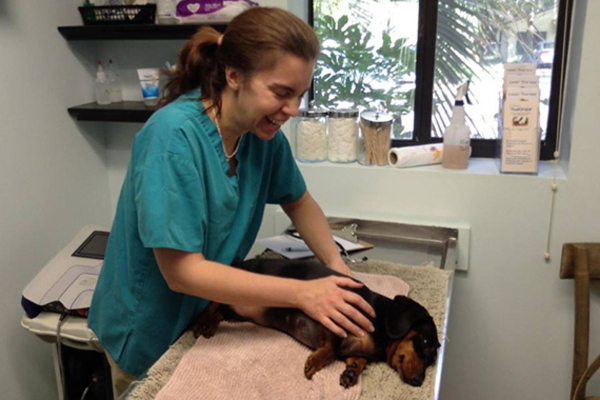
Having this information prepared will make the process smoother for you and the veterinary team.
Also, if a urine sample is needed, ideally it should be collected first thing in the morning. This is when the sample is the most concentrated, making it easier for your veterinarian to interpret the results.
How much does a vet check-up cost for a dog?
While we’re on the subject of making the appointment, you may be wondering, “How much does a vet check-up cost for a dog?” This is a great question to ask when you make the appointment.
Your veterinarian or vet staff can share an overview of the cost of the appointment, possible diagnostics, or perhaps even medication costs. Generally, most offices provide cost estimates over the phone. This means that sometimes the estimates can change and additional adjustments may need to be made after your vet examines your dog.
As a rough idea, you can expect to pay around $50 to $100 for a routine appointment or a scheduled visit to assess a minor problem. This price is for the exam specifically, and varies depending on the veterinary office, your location, your dog’s size, dog lab tests that need to be run, and more. Also, depending on your dog’s condition, you can expect additional costs for vaccines, X-rays, fecal samples, and other assessments.
2. Make a list of questions, concerns, and observations to take with you to the vet.
Once you have set up the appointment, take a minute to gather your thoughts and write down (or record on your phone) any observations, concerns, and questions that you’d like to ask the vet.
Feel free to use this list to help you get started:
- Jot down the day or time when your dog started experiencing the issue, what made you suspect the problem, and what symptoms you’ve observed.
- Note whether your dog’s problem is getting worse, better, or staying the same.
- Observe any changes in your dog’s eating, drinking, sleeping, and bathroom habits.
- If there are any other pets in your household, note whether they are sick.
- If your dog has traveled, jot down the locations. (This includes travel to the park, groomers, pet store, and even travel from previous years.)
- Bring a summary of your dog’s previous medical history (health issues, vaccines, past surgeries, injuries, allergies).
- Make a list (or take a photo) of supplements or medications that you give your dog (both prescription and over-the-counter medications).
- Write down the brand and name of your dog’s food. (Or, take a photo of the dog food label.)
Bring your notes with you to your dog’s veterinary appointment. Also, if there are specific behaviors you want your vet to see, I recommend taking pictures or videos with your phone to show your vet. Remember, you are your dog’s voice!
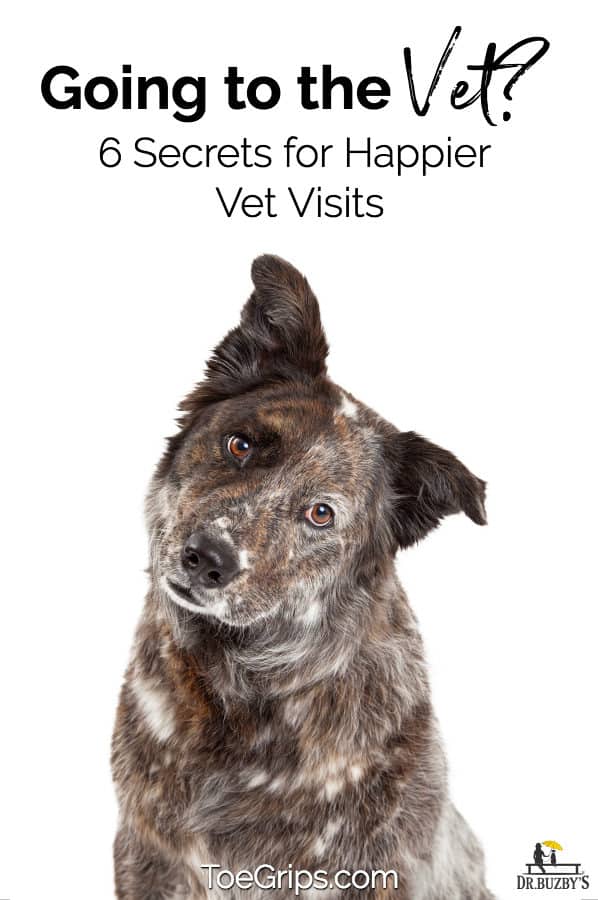
3. For well care visits, give dogs time to play before the appointment.
If I could script the ideal game plan for the vet visit, I’d recommend 30 minutes of “pre-game show” planned into the schedule before the veterinary appointment. It would include time for your dog to:
- Enjoy a short walk
- Have a potty break
- Get a little cardio play
An old adage says, “A tired dog is a good dog.” A dog who has worked his body and mind before arriving for a well care vet visit makes a better patient. This, in turn, makes going to the vet a better experience for everyone involved, especially the star of the show—your dog.
4. Bring your dog’s favorite comfort item with you to the appointment.
Don’t be afraid to bring your dog’s favorite blanket or toy along with you when taking your dog to the vet. These familiar items can help your dog relax and feel more comfortable. Your canine companion has a positive association with favorite blankets and toys, and associates them with the smells and comforts of home.
Recently, a client told me that he’d taken this idea one step further. He brings his senior dog’s bed to regular vet visits. Now, while waiting in the exam room, his dog doesn’t have to stand, sit, or lie on the hard floor—he rests on his dog bed, patiently awaiting his exam. What a great example of proactive pet parenting!
Do you know the other added benefit to bringing your dog’s bed to the veterinary appointment? Your dog is already conditioned to a specific state of mind associated with the bed—one of restfulness. This cozy “prop” instantly creates a restful mindset just by having it in the room.
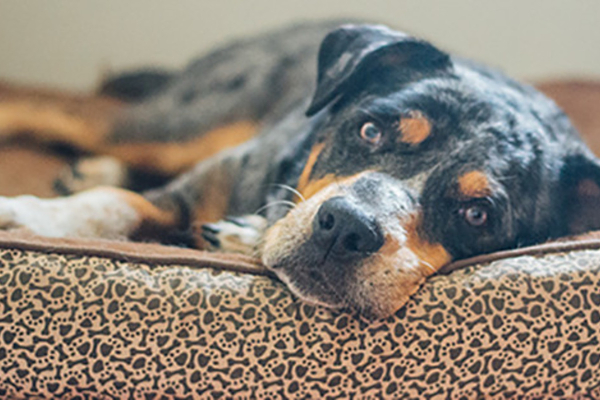
As an aside, I have noticed this concept to be exceptionally helpful when performing acupuncture on dogs. After I insert acupuncture needles, I generally need a dog to be still for 10 to 40 minutes. I always have a cushy blanket on the floor for the dog to curl up on. However, I get better results—faster relaxation—when clients bring their dog’s bed from home. This is proof that familiar objects make the vet office less intimidating.
Of course, since it is by very definition a hospital, I would recommend washing your dog’s bed (or bed cover), blanket, or toy immediately upon returning home. While the exam room is cleaned between every appointment, I never want “hospital germs” going home with my patients. This simple precaution helps ensure that your dog stays healthy after his or her exam.
5. Pack the high-reward dog treats before taking your dog to the vet.
As you prepare for your dog’s vet appointment, don’t forget to pack the high-reward dog treats. I am not talking about the half of a doggie biscuit that your dog gets for going in the crate or for performing a trick. High-reward dog treats are the very special, almost never given treats.
The reason I recommend bringing special treats is because they are likely to hold your dog’s attention and motivate him or her while at the appointment. Some of my favorite healthy treats include:
- Slivers of turkey
- Cooked pieces of chicken
- Peanut butter (Check to make sure that xylitol is not an ingredient. It’s toxic to dogs.)
- Frozen jars of baby food (especially the meat flavors like turkey, chicken, or beef)
6. Allow ample time to get your dog to the veterinary appointment.
Taking your dog to the vet often means rushing home from work, grabbing your dog, and rushing out the door. Rush, rush, rush. Is it any wonder the dog is keyed up?
So, how would the opposite (and ideal) scenario go? Are there tricks for keeping your dog calm on the way to the vet?
The answer is yes! To start, it is important to give yourself enough time to relax and breathe. On days that you are going to be taking your dog to the vet, try to arrive home at least 30 minutes to one hour before you need to leave again. When you get home, your dog is probably energetic and worked up because he or she is excited to see you.
As I mentioned above, take this opportunity to play with your dog and eliminate some of that energy. If your dog is healthy, go for a walk, play fetch, or just spend some time petting your dog. During this time, also make sure your dog has water available. Take him or her outside to do necessary bathroom business in an area that is familiar. (If your vet requested a urine or fecal sample, don’t forget to collect it!)
When the time comes to load up and get in the car, keep this experience as positive as possible. I understand some dogs are afraid of the car or get car sick. To help reduce this stress, really over-emphasize how proud you are of your dog. Here’s what this looks like in 10 steps:

10 steps for a stress-free car ride to the vet
- Praise your dog with sweet talk or dog treats as you’re walking out of your home.
- Reward your dog for watching you and standing near you as you open the vehicle door.
- Use kinds words and movements as you help your dog into the vehicle.
- Heavily reward your dog for getting into the car—even if you had to assist.
- Love on your dog and thank him or her for joining you on the car ride.
- Be sure to secure your dog in the car with a leash or kennel. This is for your dog’s safety as well as your own.
- While driving, try to keep the atmosphere calm and peaceful. Don’t blast the radio on full volume since your dog has more sensitive ears than you do. Try to make smoother, less jerky movements as you drive.
- If your dog is whining in the car or pacing, don’t yell at him or her. Rather, speak calmly and gently to your dog.
- When you arrive at the vet clinic, praise your dog for traveling in the car and being a good dog. Then, gently clip on the leash and escort him or her out of the vehicle. Don’t yank your dog out of the car if he or she is nervous to get out. Also, don’t rush this process.
- Allow your dog to sniff the smells around the vet clinic before entering. Sniffing allows dogs to investigate an area and get comfortable with the situation.
7. Keep your own stress levels in check when taking your dog to the vet.
One of the best things about dogs is their sixth sense. They can get a full read on a situation without any of the clues we humans need. If you get stressed going to the vet, I guarantee your dog will read your tension and behave accordingly.
Imagine how your dog feels in this scenario:
- You’ve got the leash in a death grip.
- You’re nervous about how your dog is going to interact with the other dogs in the waiting room.
- You’re waiting in the exam room and your dog is whining and you feel like whining, too!
- You hold your breath when the technician approaches with the rectal thermometer.
- Blood work?! Did someone mention blood?
Guess what? Your dog feels all of that!
Instead try this scenario:
- Relax, and I dare say, try to have fun!
- Remain positive that your veterinarian and the staff will take care of your dog and work hard to ensure a smooth experience for you both.
- Trust the people. Trust their process. Trust your dog.
- BREATHE. Your dog will thank you for it!
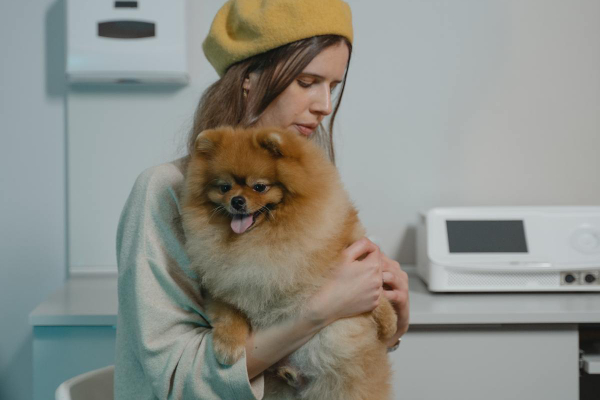
At the veterinary appointment
Now that you’ve prepared for the appointment, made sure everything is ready ahead of time, and arrived calm, cool, and collected, it is time for the veterinary visit. Just like before the appointment, the best way to approach it is through planning and confidence.
8. Plan your dog’s entrance and exit from the veterinary clinic/hospital.
Veterinary hospitals tend to be feast or famine. The appointment schedule is either dull and slow or triple booked with three emergencies on the way. If you happen to arrive during a “feast,” here’s a tip: Use the parking lot as an extension of the waiting room.
Simply ask the receptionist if it’s okay for you to wait outside. No doubt, they will be grateful and respect your wisdom. (Also, many hospitals offer this as a routine option now due to COVID.) Enjoy some bonding time with your dog outside. If the weather is bad or your dog has had enough of the parking lot, you can sit in your car and listen to classical music to pass the time, happily oblivious to the chaos inside.
If you choose to do the latter, let the receptionist know where you can be found or provide your cell number so the staff can deliver the veterinary version of curbside service, and usher you into an exam room when one becomes available.
9. Provide your dog with moral support during the vet visit.
Once in the exam room, I urge you to provide your dog moral support. The single most important technique I advocate for improving a dog’s experience at a vet visit is low-tech and free: Distraction!
You’ll have to play this one by ear because sometimes veterinarians prefer that you not be physically involved with your dog during the exam. Certain situations call for vets and vet technicians only.
But if you are in physical contact with your dog, don’t turn into a statue while the temperature is taken, blood is drawn, or other intimidating medical procedures take place. When you do that, your dog detects your stress and focuses his or her full attention to the unpleasantry, and object accordingly.
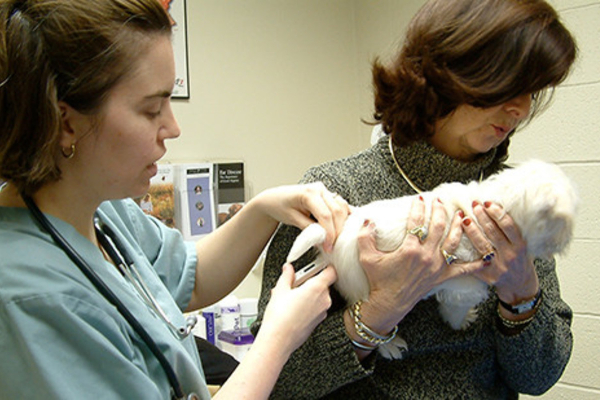
There’s even science behind this idea! When you accidentally smash your thumb with a hammer, what do you instinctively do? You rub it! This is because pain is multi synaptic. This means that pain takes many pathways to reach the brain. If you distract the body by sending information to the central nervous system on other roads during the discomfort, it creates more “traffic” which the pain sensations have to overcome to get to the brain. Vigorous head rubbing, belly scratching, or rump patting creates helpful “traffic.”
Also, this is a good time to use those high-level reward treats, too. These favorite treats can provide a distraction for your dog. Plus, they can be used as positive reinforcement when your dog is being well-behaved during the exam. Using this system might help your dog learn that the veterinary office isn’t as scary as it seems.
10. Ask your veterinarian for clarification or to repeat instructions.
Next, listen closely when your vet speaks with you about home care instructions and explains your dog’s medications. This is your homework. Understanding your assignment is key to achieving success.
When your veterinarian shares important information, don’t hesitate to repeat it back or ask for clarification.
Though veterinarians try hard to explain things in plain English, sometimes we get caught up in the many five-syllable words that end in “itis” and speak a cheap knock-off of Latin. Should this happen, I assure you that we want you to tell us.
Ideally, you will leave the appointment with a clear picture of your dog’s health and an appreciation of your role in maintaining it. If you are unsure, ask your veterinarian for some written discharge instructions. They would be happy to provide you with that information. Veterinarians want you to be successful in caring for your dog at home.
11. Ask your veterinarian to demonstrate administering medications.
If your dog is sent home with medications, it is extremely important that you follow the directions exactly as they are written. There are many medications that—if given differently than prescribed—can become dangerous or ineffective for your dog.
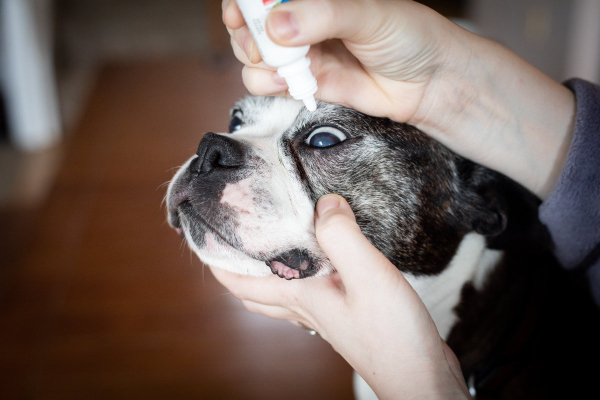
Before you leave the appointment, read the label that your veterinarian placed on the medications. If the directions don’t make sense, please ask the veterinary team to explain them or write additional details before you leave. This is much easier and less stressful than arriving home and realizing that the directions don’t make sense.
Also, if you’ve never given medications to your dog before or if your dog won’t take pills, ask your veterinarian for a demonstration. Giving medications isn’t always easy, so please don’t feel embarrassed or too shy to ask!
A few other things you might want your veterinarian to demonstrate include:
- How to clean your dog’s ears
- How to apply medication to your dog’s eyes
- How to give pills to dogs who have allergies
Even if your veterinarian shows you how to give the medication during the appointment, it is okay if you forget when you get home. Call the vet office to ask them to walk you through it over the phone. Or, set up another appointment for a refresher.
After your dog’s veterinary appointment
Congratulations! At this point, you’ve made it through the most stressful part of the veterinary appointment for your dog (and probably for you as well). Now, it is time to do the “conclusion” work.
12. Schedule any follow-up appointments.
Depending on your veterinarian’s instructions, you may need to make a follow-up appointment. I always recommend that clients make this appointment before leaving the vet office. By scheduling it before you leave, you won’t forget to make the appointment.
13. Make the payment for the vet visit.
People in veterinary medicine often hear that veterinary care is expensive. However, veterinarians try to make treatment as cost effective and available to their clients as possible while still being able to pay the bills to maintain the hospital, the equipment, and the staff.
The biggest difference between human medicine and veterinary medicine is that human medicine is heavily influenced by health insurance. Health insurance has become the standard in human medicine and helps make medical care more accessible. Unfortunately, the use of insurance has not become as widely used for veterinary care.
There are many pet-based insurances that are available to choose from. It is important to research each insurance company and the plans they provide. There are some plans that only cover emergencies and there are others that cover all areas of care (including preventative medicine, vaccines, surgeries, and emergencies).

Inquire about payment options like Care Credit
If you don’t have pet insurance and the cost of veterinary care is a concern, talk with your veterinarian about different payment options. Many vet hospitals do not accept payment plans. However, they try to offer other options instead.
One option might be working closely with rescue groups or organizations who provide waivers and financial support for veterinary care.
Care Credit is another option. This is a special type of credit card-based financing that is specific to medical and healthcare expenses. And it works for both human and pet medical costs. Care Credit is beneficial because it is usually easier to qualify for than other lines of credit. Additionally, depending on your plan, there are some options that give you designated interest-free time periods.
If you have questions about what payment options are accepted by your veterinarian, please be sure to ask their office before your appointment.
14. Don’t hesitate to call your veterinary office with questions once you get home.
Your veterinarian cares about helping both you and your dog, and wants you to be comfortable with what was discussed and any care that your dog needs. Please call them with any questions or concerns that you have once you get home.
15. Reward your amazing dog for going to the vet!
After the appointment, reward your dog with positive words, affectionate petting, a walk, a special snack, or a new toy. You and your dog make a great team!
By rewarding your dog, you are reinforcing the vet visit as a positive experience. Hopefully, your dog remembers all the rewards and praise he or she received. And maybe he or she will be less nervous next time.
It’s okay if your dog still needs help feeling comfortable!
If your dog is still nervous about going to the doctor, ask your veterinarian about medications to take the edge off. For some dogs, going to the vet office is still scary no matter how much time, effort, and planning you put into the experience. For these dogs, using medications that help reduce stress and anxiety can be beneficial for them, you, and the veterinarian. Veterinarians are often very grateful when owners notice that their dog needs some extra help feeling comfortable. So please, do not be afraid to ask!
BONUS: Begin practicing now for future vet visits.
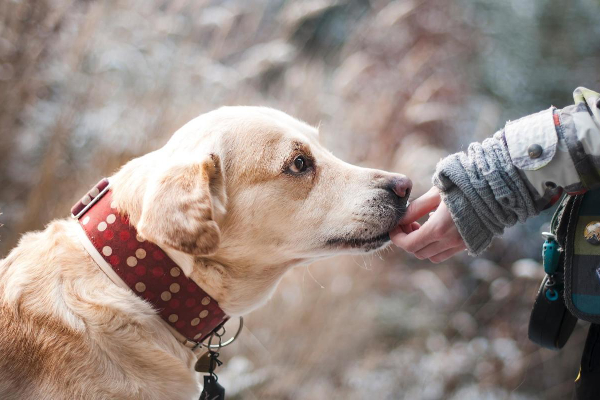
My final tip for taking your dog to the veterinarian is also my favorite: Start practicing now for future veterinary appointments.
What does practice look like? It’s as simple as using positive reinforcement to teach your dog skills that will make future vet appointments easier. Positive reinforcement means adding some “goodness” to encourage desired behaviors. It might include offering your dog treats, toys, petting, words of affirmation, or even clicker training in stressful situations.
Here are some situations that you can practice with your dog prior to your next veterinary appointment.
Help your dog feel comfortable on car rides.
If your dog is scared of car rides to the vet hospital, I recommend training him or her to become comfortable in the car. This can be done by taking your dog on short, frequent car rides to places that he or she loves (like the park). During the car ride, reward and encourage your dog.
Help your dog adjust to the atmosphere of the veterinary office.
If your dog is scared of the veterinary office, try taking your dog to the hospital for mini training sessions. These are not veterinary appointments. Rather, you are helping your dog get comfortable in the veterinary setting.
To start, you can bring your dog for walks around the building. By exploring and sniff everything, your dog learns that there is nothing scary outside. After doing this a few times on different days, you can graduate to bringing your dog inside the office. Simply walk through the lobby together. Ask the staff to give your dog treats and loving pets.
Of course, don’t ask your dog to participate in any diagnostics or treatments. Just allow your leashed dog to explore and become comfortable with the office. Once your dog has gained confidence in the lobby, you go to the next level and practice weighing him or her on the scale.
Remember, this is positive training and should not be intermixed with a vet visit. By going slow, planning multiple mini sessions, and making each experience a positive one, you’re well on your way to helping your dog feel more comfortable.
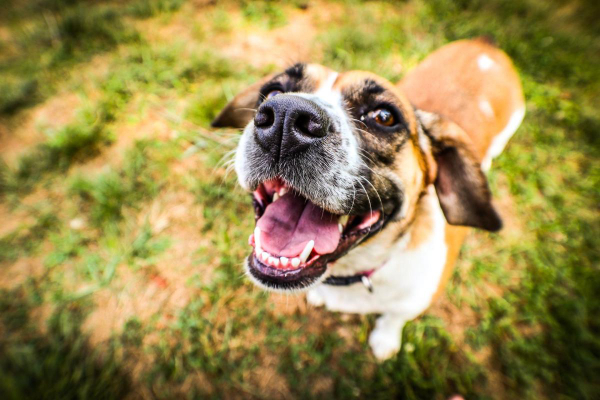
Teach your dog behaviors that may be required at a vet visit.
Beyond reducing your dog’s stress in the car or at the veterinary office, you can also teach your dog tricks that can be helpful during during a vet visit.
- Teach your dog to shake his paw—Helpful when trimming your dog’s nails or for paw injuries.
- Teach your dog to stand in place—Can be used to encourage your dog to stand still during the physical exam.
- Kennel train your dog — If your dog needs to stay at the vet for a surgery or drop-off exam, this skill is critical.
- Teach your dog to place his or her nose in a muzzle—Even the calmest dog can react when very frightened or painful. Introducing a muzzle is important for your dog’s safety as well as your own.
According to one study on minimizing stress in the veterinary hospital, 78.5% of dogs are fearful when they are on the exam table at the vet office. I truly believe that through training, positive reinforcement, and fear-reduced handling, veterinarians and owners can reduce this number and make vet appointments less stressful for dogs.
Celebrate your success!
Being thoughtful and proactive in your dog’s care directly impacts his or her quality of life, and by association, also your own! With these simple tips, I think you can land the triple win at your vet visits!
A win for you—you’ve been your dog’s voice!
A win for the veterinary staff—they are able to focus on quality medicine.
Most importantly, a win for your dog—who is happier and calmer at the vet.
What questions do you have about taking your dog to the vet?
Please comment below.


Thanks for the info about going to the vet. My dog is sick. I’ll consider this info as I look for a vet.
My dog used to display aggressive behavior but since I consulted a vet, he started behaving fine. Great one!
Thank you for your tips on having successful visits to the vet with your dog. I like your suggestion to take notes on your questions and concerns so you can clarify them with your vet. I’d imagine that the very first step for a successful vet visit would be to choose a vet that has a great reputation and track record.
Hi Charlotte,
Thank you for the kind words about the article. I have always found it helpful to seek the advice and recommendations of friends I know and trust who have personal experience with the service or business I am researching. I hope you have a vet you are comfortable with and can partner together for the health and wellbeing of your pup.
I loved that you mentioned having a short walk and cardio play with your dog will help you to prevent accidents when taking your dog to the vet. My husband and I adopted a dog recently, and we are looking for advice about how to take care of him. I will let him know about your recommendations to help us with our trips to the vet.
Thanks, Ellie! Nothing means more to me as a veterinarian than empowering people to help their dogs! Congratulations on your new adoption! ♥️
Excellent information! I need to breathe when I go to the doctor! Thank you very much for this information. I’ve taken my dog to the dog park for 15 minutes before a healthy dog exam. Washed paws after the dog park everytime we visit!
Dear Gwen,
You are a superstar, conscientious dog mom!
Keep up the great work!
Thanks for the tips on going to the vet. My dog always gets stressed when we go to the vet, and I want to make it easier on everybody. I like that you mentioned play with your pet and tire him out before you go to the vet to reduce stress. I will be sure to do that.
I like that you said that if you are getting stressed while going to the vet then your dog will act accordingly. When I was taking my dog to the vet, I got a couple of tips from people who had already taken their dogs to the vet before. It might be a good idea to learn to relax and calm yourself before you are in an emergency situation.
In your article, you recommended that whether you are taking your dog in for a routine wellness visit or for a problem visit, take some time to gather your thoughts and write down (or record on your phone) your observations, concerns, and questions. We have a family dog that has been having a lot of health issues lately that we don’t understand. I wonder how the checkup for a dog differs from the checkup of a human.
I just got a dog and need to get him a vet. Thanks for the advice about not forgetting to breathe and that your dog can pick up on your mood. Another thing to consider is to get a vet that your dog and you like.
This is some really good information about taking your pet to the vet. I like that you pointed out that animals can tell if you are nervous, and that will affect them. It seems like if your pet needs emergency veterinary help you should remain as claim as possible while taking them there.
I love your tip to keep breathing. I think it’s really important to be there to keep your dog relaxed during any veterinary consultations. If your dog can be relaxed around the vet, it makes a lot of thing easier!
Thanks for the information. I have been wondering how to make my Dog Braxton feel better at the vet. I think bring his favorite dog bed will do the trick, and yes he has more than one bed. He is a little spoiled, and I am sure he will love to have his bed to help him feel comfortable. This will make my trips to the vet much smoother in the future.
My wife and I recently got a dog that we absolutely love! We are still trying to figure out how to best take care of him and have gone to the vet a couple of times now. I appreciate you talking about how to make these visits less stressful. I like your idea to walk the dog and give them a chance to relieve some energy before taking them to the vet. I am hoping these will help for our next visit. Thanks!
Another suggestion–acclimate your young dog to enjoying a visit to the vet by bringing him or her along when you just swing by to pick up heartworm refills. Try to pick a time that isn’t likely to be busy (if you can) and the pup will get some cuddles from the receptionist and techs (as well as treats!) which will help future visits be less traumatic. Keep it short–this is a business after all. Call ahead so that they can have your refill ready. Then, if it is busy, you aren’t taking up time and space while they dig out your chart and bring the meds to the front, etc. Just a few minutes in the waiting room with nothing bad happening (no shots) can make for a less stressful visit when you do need to come in for something less pleasant.
Nancy, 1000% agreed. Brilliant tips! Thanks!
I like the recommendation to keep yourself calm when taking a pet to the vet. It’s interesting that out attitude could have an effect on the pets attitude while at the vet. I’ll have to keep this in mind for the next time I visit the veterinarian with my dog.
Yes, It’s quite amazing what a big difference this can make. A client’s state of mind can significantly affect their dog’s behavior, especially the sensitive dogs who are very in tune with the energy in the room. It literally translates right through the leash, as well as the air. 🙂
I recommend my puppy clients take the puppy by for “hello” visits. These are short visits where the receptionist or vet tech greets the pup and gives them a small cookie. I may even take them over,to the scale and “weigh” them.
The puppy starts to become accustomed to the vet office without getting prodded and poked.
Great point, Carol! Positive conditioning in puppyhood can pay huge dividends in shaping the dog’s reaction to the veterinary experience (as well as lots of other things!) for the rest of his/her life. Thanks for sharing this!
Thank you so much for these simple suggestions that are so common sense centered.
You are welcome, Cyndi! I hope they are helpful for you and your dog. 🙂